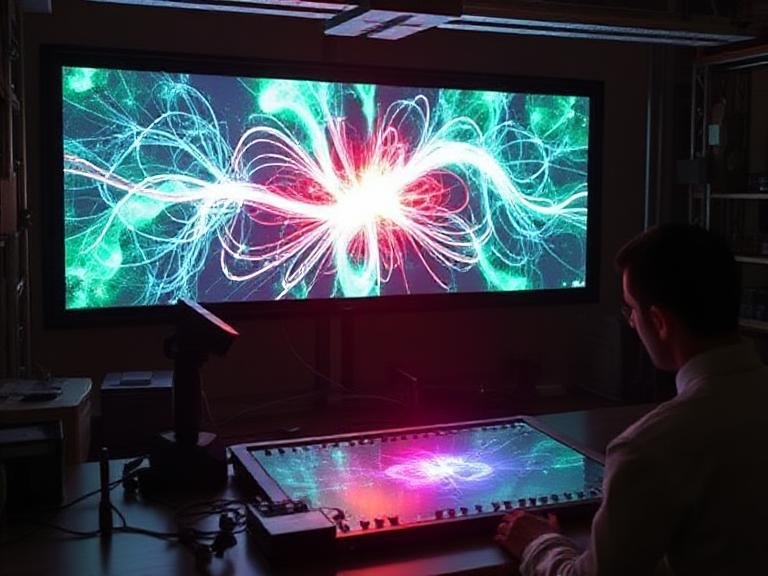Oxford Team Finds a Scientific Way to Produce Light in Darkness

Oxford Team Finds a Scientific Way to Produce Light in Darkness
In a fascinating development, researchers from the University of Oxford and Instituto Superior Técnico in Lisbon have simulated how intense laser beams interact with what’s known as the quantum vacuum. This may sound like magic — creating light out of nowhere — but it’s actually rooted in deep quantum physics.
Published in Communications Physics , the study offers one of the most detailed looks yet at how light can seemingly appear from empty space. The truth? That “empty” space isn’t really empty — it’s filled with fleeting pairs of electrons and positrons that pop in and out of existence.
Simulating Quantum Reality with Advanced Software
The team used an upgraded version of the OSIRIS simulation software , originally developed for infrared imaging and outdoor scene modeling. With this tool, they recreated a rare phenomenon called vacuum four-wave mixing .
Here’s how it works: three powerful laser pulses are fired into the quantum vacuum. Their electromagnetic fields influence the virtual particles floating there, causing photons to scatter off each other — and out of this interaction comes a fourth beam of light.
“This isn’t just theoretical science,” said Professor Peter Norreys from Oxford’s Department of Physics. “It’s a major step toward proving quantum effects experimentally, which so far have mostly existed in theory.”
Why Now? The Rise of Ultra-Powerful Lasers
This research comes at a time when new generations of multi-petawatt laser systems are becoming available worldwide. These lasers are strong enough to create the extreme electromagnetic fields needed to observe these rare quantum events in real experiments.
Major facilities such as:
- Vulcan 20-20 in the UK
- ELI (Extreme Light Infrastructure) in Europe
- SHINE and SEL in China
- OPAL (Optical Parametric Amplifier Line) in the U.S.
…are now reaching the power levels necessary to test these predictions in real life.
A New Tool for Studying the Quantum Vacuum
To make their simulations more accurate, the researchers applied a semi-classical numerical model based on the Heisenberg-Euler Lagrangian . This method allowed them to simulate two key quantum vacuum effects and cross-check results against known theories, including vacuum birefringence — where light bends or splits when passing through a strong field.
They tested both plane-wave and Gaussian laser pulses and found their results aligned closely with existing models. In the case of four-wave mixing, using three Gaussian beams enabled them to track the formation of the fourth beam over time.
Interestingly, the simulation also revealed minor distortions — like astigmatism in the output beam — along with precise measurements of the interaction duration and affected area.
A Window into the Quantum World
Lead author Zixin Zhang, a doctoral student at Oxford, explained:
“Our program gives us a time-resolved, 3D view into quantum vacuum interactions that were previously impossible to observe. By applying our model to a three-beam scattering setup, we captured the full range of quantum signatures and gained insights into the timing and spatial behavior of the interaction.”
The team validated their findings by comparing them with simpler models and past experimental data. These tools will help scientists design future lab experiments with greater control over laser timing, shape, and direction.
Opening the Door to New Discoveries
Professor Luis Silva, co-author from Instituto Superior Técnico and visiting professor at Oxford, added:
“This new computational method, integrated into OSIRIS, will support a wide range of upcoming experiments at the world’s most advanced laser facilities. Combining ultra-intense lasers, cutting-edge detection methods, and sophisticated modeling is paving the way for a new era in laser-matter interactions — and potentially rewriting parts of fundamental physics.”
Beyond testing quantum electrodynamics, this simulation approach could aid in the search for dark matter candidates like axions and millicharged particles , offering new ways to explore the invisible universe.
Source: Oxford University, Nature





